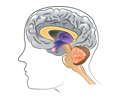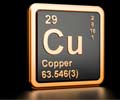Causes
The cause of hand tremors vary from
The various causes of hand tremors are listed below:
Resting Tremors: Resting hand tremors appear when the hand is resting, and go away or becomes less noticeable with movement. The tremor worsens in stressful conditions. Conditions that result in resting tremors include:
- Parkinsonism:
Parkinsonism is a condition characterized by low levels of a chemical called dopamine in the brain. The hand tremor usually appears at rest and disappears with movement. The hand moves in a typical pill-rolling fashion. The tremor increases tremendously withstress and emotions. The chin, lips, legs and trunk can also be affected by Parkinson tremor. In addition, the patient shows other symptoms like a shuffling gait, rigidity of muscles and slowness of movements. Antiparkinsonism medications are usually effective in controlling the tremor. - Drug-induced Tremors: Drugs like neuroleptics,
metoclopramide and prochlorperazine can cause resting tremors similar to those observed in Parkinsonism. - Vascular Midbrain Lesions: Holmes tremor is also known as rubral tremor or midbrain tremor. This rare tremor is associated with a vascular lesion in the central nervous system and is characterized by combination of slow rest and intention tremor.
Action Tremors: Action tremors are tremors associated with movement. These include:
- Intentional Tremor: This type of tremor occurs at the end of purposeful movement such as writing, pressing a button or reaching out for an object
- Cerebellar tremor: The cerebellum is an important part of the central nervous system responsible for movements and balance. Conditions like stroke, tumor and multiple sclerosis that damage the cerebellum result in intentional tremors. Cerebellar tremor is a slow tremor that occurs at the end of purposeful movement such as trying to press a button or touching a finger to the tip of one’s nose. Overuse of drugs like phenytoin, sodium valproate and amiodarone, and chronic alcoholism can also cause cerebellar tremor. The tremor is often irregular and jerky. The patient shows an abnormal gait, incoordination of the limbs, rapid and involuntary movement of eyeballs, and alteration in speech
- Wilson’s disease: Wilson’s disease is a condition where the patient suffers from abnormal
copper metabolism . The tremors appear as flapping movements, most commonly in ‘wing-beating’ posture. Additional symptoms include increased muscle tone, rigidity and slow movements, Kayser-Fleischer rings in the eyes. Liver functions are abnormal in these patients. - Simple Kinetic Tremor: Simple kinetic tremor occurs during any voluntary non-target directed movements, like flexing or extending.
- Postural Tremor: This type of tremor occurs when arm, leg or hand is held in one position for a period of time against gravity such as while writing, holding a cap and holding the arms out.
- Benign essential tremor: Benign essential tremor is the most common form of tremor and generally affects people over the age of 40 years. It usually affects hands but the head, voice, tongue, and trunk may also be involved. Although the tremor may be mild and non progressive over a long period of time, it may progress within a few years in some individuals. The condition usually runs in families. It is triggered or worsened by stress,
fever ,fatigue , heightened emotions and low blood sugar, andreduces with alcohol intake . It is treated with medications and in some cases with electrode placement anddeep brain stimulation . - Physiological tremor: This type of tremor occurs in every normal individual and is rarely visible to the eye. Severity of the tremor increases with strong emotions such as anxiety or fear. All voluntary muscle groups are affected by physiological tremor and can be detected by extending the arms and placing a piece of paper on top of the hands. Physiological tremors may be increased with drugs like
sympathomimetics and antidepressants. - Dystonic tremor: Dystonic tremors occur in individuals of all ages and in any body part affected by
dystonia i.e. abnormal posturing due to altered muscle tone. They are jerky, irregular and variable depending upon the posture and activity and are relieved with complete rest or by touching the affected body part. - Thyrotoxicosis: Thyrotoxicosis is a condition where the patient suffers from high thyroid hormone levels. Tremors are evident when the hands are held out. Other associated features include a rapid pulse, weight loss, and sometimes the presence of
goiter and bulging of eyeballs. The condition is diagnosed using thyroid function tests. Hypoglycemia : Low blood sugar levels can result in hand tremors, which usually disappear once the condition is treated. The patient may also have symptoms of sweating and convulsions in some cases.- Cushing’s syndrome: Cushing’s syndrome results in increase adrenaline levels in the blood, which could stimulate hand tremors.
- Alcohol withdrawal: Alcohol withdrawal after prolonged intake can result in hand tremors. Other symptoms include sweating, anxiety,
nausea and vomiting , headache and insomnia. Some patients may experience hallucinations and seizures. Peripheral Neuropathy : Conditions that affect peripheral nerves like dysgammaglobulinemia cause postural and kinetic tremors.- Drugs: Overdosage of certain medications as well as sudden withdrawal can precipitate hand tremors. Drugs that are associated with postural tremors include amiodarone, amphetamine, beta adrenergic agonists, caffeine,
cyclosporine , corticosteroids, sodium valproate, theophylline, thyroid hormone and tricyclic antidepressants. - Anxiety:
Anxiety and panic attacks commonly cause postural tremors especially in younger individuals. The patients may also complain of palpitations, chest discomfort and a feeling of suffocation. - Isometric Tremor: Isometric tremor is a type of tremor that occurs during the contraction of a voluntary muscle in the absence of any movement. Essential tremor, enhanced physiological tremor, dystonic tremor, and tremor in Parkinson’s disease can manifest as this type of tremor.
- Task-specific tremor: Tremors that appear with certain tasks are referred to as task- specific tremor. These tremors include primary writing tremor and musician’s tremor
In addition to the above tremors, psychogenic tremors i.e. tremors due to a psychological cause, can manifest as any type of tremor. The tremors may appear, resolve or change direction suddenly. They decrease or completely stop when the individual is distracted.








